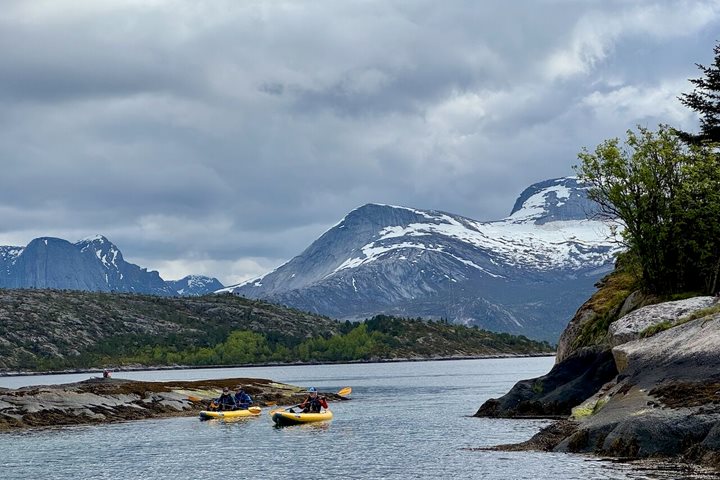This day turned out to be a remarkable day of Arctic exploration, mainly for two reasons: weather and whales! During the night we had sailed from about 80 degrees towards 79 degrees north. The first risers on the bridge could observe the shores of Mitra Peninsula as National Geographic Explorer was heading for Signehamna, the first destination of the day. The morning light shifted frequently. Sparse bundles of sun rays now and then broke through cloudy skies, with scattered snow showers appearing on the horizon.
Two minke whales were observed at the mouth of Lilliehöökfjorden. Signehamna, which is a small bay innermost in this fjord, once was the scene of a special drama. During World War II this location was chosen by the German forces for one of their land-based weather stations in Svalbard, to support military operations in the Barents Sea. The station near Signehamna was erected in 1941 and then detected and blasted by Norwegian forces in 1943. One German and one Norwegian soldier died during that battle.
After breakfast some guests signed up for a zodiac cruise, whereas many others went ashore to explore the snow-covered landscape around Signehamna. Some parts of the hike had to cross a few sheltered passages where up to three feet of snow was accumulated. This, however, only triggered our brave hikers to force their way through! As the hikers reached the location of the German weather station, only parts of the remains peeked out of the newly fallen snow.
After a good lunch break we cruised further southwards. As we approached the drop-off towards deep waters, we spotted a number of big whale blows in the distance, seemingly from fin whales. A group of white-beaked dolphins were observed surf-riding just off the bow. For most guests the greatest event of the day, however, was the encounter with two blue whales surfacing very close to the ship. What a rare treat! The blue whale is the largest animal ever to have lived on earth. As the catching of big whales was brought to an end in 1965, many people feared that the blue whale had gone extinct. However, the population now shows signs of a slight increase. Over the last seven years a few blue whales have been observed around Svalbard. Blue whales are known to cruise at three to six kilometers per hour, but can attain burst speeds of up to 30 km an hour! During the day they may dive to about 100 meters, feeding on schools of krill. Their dives usually last 8-15 minutes, but dives of up to 30 minutes have been recorded. Like most other large baleen whales the blue whale seems to migrate into cold waters for foraging in the summer and moves to more temperate areas for wintering. Blue whales are believed to reach an age of 80-90 years, perhaps longer.
The encounter with this magnificent, rare mammal was a truly exciting highlight on this winter-like summer day in Svalbard. To many of us, it was a day that will stand out among the best of this Arctic adventure.







